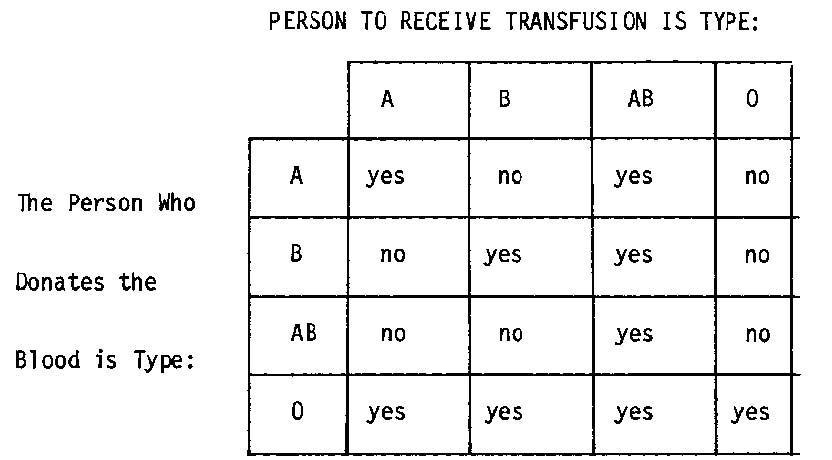Blood, Electrolytes, and Intravenous Infusions
1-9
1-9. A-B-O GROUP
Each person has either type A, B, AB, or O. The most common types in America are type 0 (45 percent) of the population and type A (41 percent). The blood type indicates the presence or absence of certain antigens. These antigens stimulate the body to produce antibodies. The antibodies react with their antigens to form agglutination or little clusters (clumps) in the blood. When a person has type A blood, his blood contains antibodies for type B, but none for type A. The opposite is true if he has type B blood. That is, the person would have antibodies for type A, but none for type B. If a person has type AB blood, he has neither type A nor type B antibodies and can receive type A, B or AB blood. Type O blood causes no antibodies to be formed and thus can be used to infuse any A-B-O group person. Figure 1-5 shows these relationships.
Figure 1-5 Blood types and compatible transfusions.
a. A type AB person is generally called "the universal recipient," and a person with type O blood is generally called the "universal donor."
b. A universal recipient is a person whose blood does not try to fight off the blood cells from any A-B-O source. Thus, it makes no difference which A-B-O type blood he receives. He can generally accept them all without adverse effect.
|
|
c. A universal donor is a person whose blood is well accepted by any A-B-O type person. This blood generally causes no adverse effects on the blood of any A-B-O type person who receives it. Because of this unique property, the universal donor is frequently asked to make blood donations.


